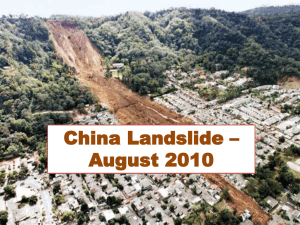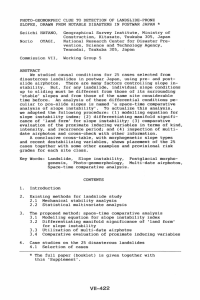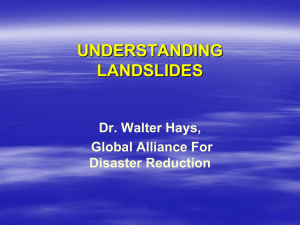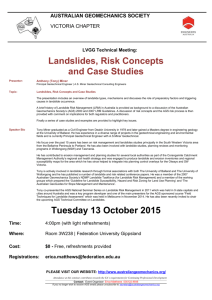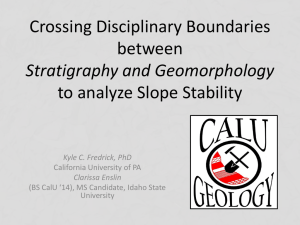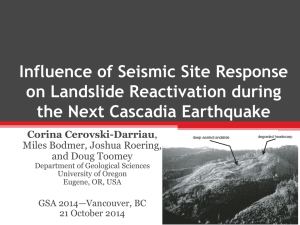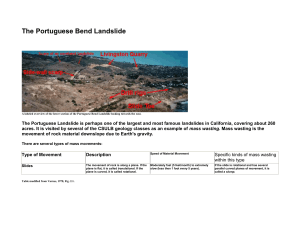Click here - GeoMontreal 2013
advertisement
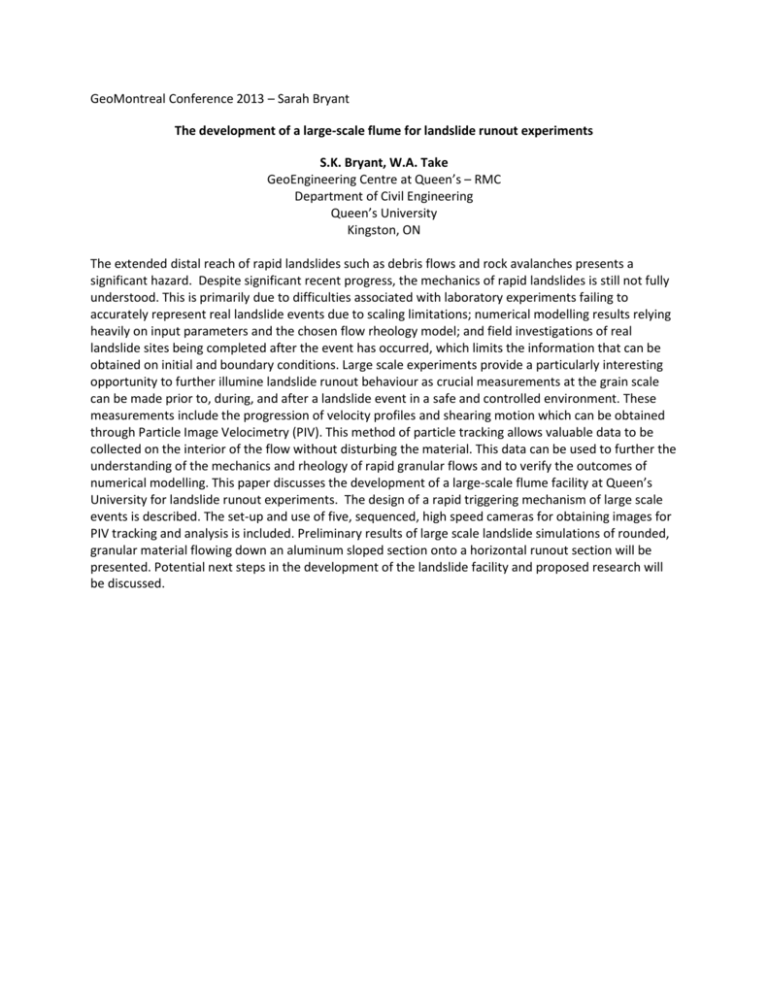
GeoMontreal Conference 2013 – Sarah Bryant The development of a large-scale flume for landslide runout experiments S.K. Bryant, W.A. Take GeoEngineering Centre at Queen’s – RMC Department of Civil Engineering Queen’s University Kingston, ON The extended distal reach of rapid landslides such as debris flows and rock avalanches presents a significant hazard. Despite significant recent progress, the mechanics of rapid landslides is still not fully understood. This is primarily due to difficulties associated with laboratory experiments failing to accurately represent real landslide events due to scaling limitations; numerical modelling results relying heavily on input parameters and the chosen flow rheology model; and field investigations of real landslide sites being completed after the event has occurred, which limits the information that can be obtained on initial and boundary conditions. Large scale experiments provide a particularly interesting opportunity to further illumine landslide runout behaviour as crucial measurements at the grain scale can be made prior to, during, and after a landslide event in a safe and controlled environment. These measurements include the progression of velocity profiles and shearing motion which can be obtained through Particle Image Velocimetry (PIV). This method of particle tracking allows valuable data to be collected on the interior of the flow without disturbing the material. This data can be used to further the understanding of the mechanics and rheology of rapid granular flows and to verify the outcomes of numerical modelling. This paper discusses the development of a large-scale flume facility at Queen’s University for landslide runout experiments. The design of a rapid triggering mechanism of large scale events is described. The set-up and use of five, sequenced, high speed cameras for obtaining images for PIV tracking and analysis is included. Preliminary results of large scale landslide simulations of rounded, granular material flowing down an aluminum sloped section onto a horizontal runout section will be presented. Potential next steps in the development of the landslide facility and proposed research will be discussed.
